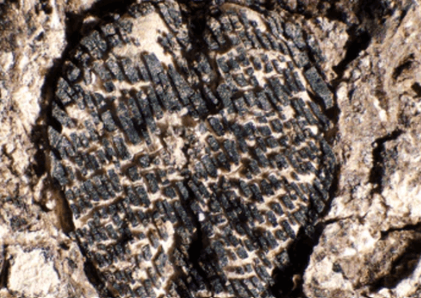Can it be true? We would not have wine if the dinosaurs were not made extinct?
The catastrophic asteroid impact that led to the extinction of dinosaurs also indirectly fostered the spread of grapevines, according to new research from the Field Museum in Chicago. This intriguing study provides insights into how an ecological void left by the dinosaurs facilitated a lush environment for grapevines to thrive and diversify.
Researchers have unearthed grape seeds in Colombia, Panama, and Peru, dating from between 60 to 19 million years ago. These fossils represent the earliest known evidence of grape plants in the Western Hemisphere. The findings are significant as they provide a clearer picture of the grape family’s evolution post-dinosaur era.
We Might Owe Wine To The Asteroid That Killed The Dinosaurs 66 Million Years Agohttps://t.co/b9J9H9qo3v
— IFLScience (@IFLScience) July 1, 2024
About 66 million years ago, an asteroid larger than Mount Everest crashed into Earth, causing a mass extinction event that wiped out three-quarters of all life forms, including dinosaurs. This monumental event reshaped the planet’s biological framework, enabling small mammals and birds to emerge as dominant species. The new densely layered forests that developed in the absence of large herbivorous dinosaurs created ideal conditions for vine species, like grapes, to prosper.
As the dinosaurs can attest, asteroids can be scary, but as building blocks of our solar system they are also fascinating. Celebrate Asteroid Day this year by joining us for “Space Rocks!,” a live interactive planetarium show exploring the nature of these rocky bodies. pic.twitter.com/ByHm0VabyX
— Space & Rocket Ctr (@RocketCenterUSA) June 30, 2024
Fabiany Herrera, the lead author of the study, emphasized the importance of these findings. The discovery of these ancient grape seeds shows a clear timeline where, soon after the dinosaurs’ disappearance, grapes began to expand globally. The timing aligns remarkably with the period of the Chicxulub asteroid impact, suggesting a direct correlation between the dinosaurs’ extinction and the proliferation of grapevines.
The study suggests that without large dinosaurs to disrupt the forest structure, trees grew more densely. This allowed vines to thrive by climbing these trees, seeking sunlight. Furthermore, the diversification of birds and mammals played a crucial role in dispersing grape seeds, which contributed to the spread and variety of grapevines across different regions.
Ammonites Thrived Before Dinosaur-Killing Asteroid Impact, Study Finds https://t.co/ygAwgFtxx6 #asteroid, #climate, #dinosaur, #earth, #environment, #getgreengetgrowing, #gngagritech, #greenstories, #naturalhistory, #nature, #octopus, #swimming
— Greenstories – Stories about mother earth (@GNGAgritech) July 1, 2024
This research not only sheds light on the adaptive evolution of grapevines but also illustrates a fascinating example of how major disruptions in Earth’s history have opened the doors for new life forms to flourish.
Key Points:
i. recent study links the extinction of dinosaurs, caused by a massive asteroid, to the proliferation of grapevines.
ii. Fossilized grape seeds dating back to 60 to 19 million years ago have been discovered in regions of Colombia, Panama, and Peru, marking the earliest evidence of grapes in the Western Hemisphere.
iii. The extinction of large dinosaurs led to denser forests, creating suitable environments for grapevines to grow and climb.
iv. The spread of grapevines post-dinosaur era was also aided by the diversification of birds and mammals, which helped in seed dispersal.
v. This study from the Field Museum in Chicago highlights how ecological shifts following major extinction events can dramatically alter the course of biological evolution and species distribution.
Bobby Stellanti – Reprinted with permission of Whatfinger News



